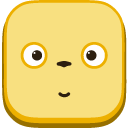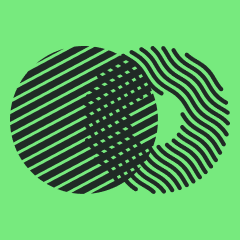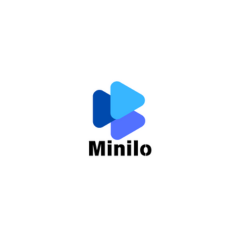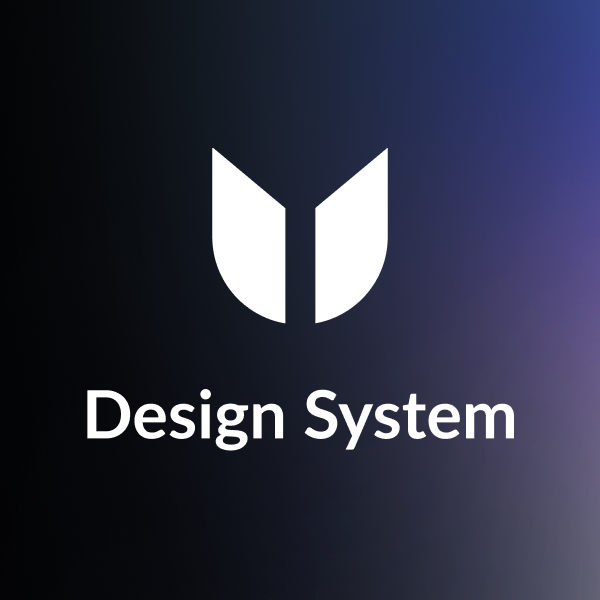Butter Radius
Alternatives
0 PH launches analyzed!

Butter Radius
Spread consistency. The secret to a smoother design system.
3
Problem
Users manually adjust border radius values in design tools, leading to inconsistent proportions and time-consuming iterations across components in design systems.
Solution
A Figma/design plugin that applies proportional border radius using two scaling modes (fixed or dynamic ratios), enabling mathematically consistent corners with one click (e.g., setting radius based on element size).
Customers
UI/UX designers and front-end developers building scalable design systems for web/mobile apps.
Unique Features
Offers fixed/dynamic scaling modes, automatically adjusting corner radii proportionally to element dimensions to maintain visual harmony.
User Comments
Saves hours on radius tweaking
Eliminates guesswork in corner styling
Essential for design system consistency
Lightweight and intuitive
Wish I had this earlier
Traction
Launched on ProductHunt 4 days ago (as of Oct 2023), ranking #4 with 142 upvotes. No public MRR/user metrics yet.
Market Size
Global UI design tools market projected to reach $10 billion by 2027 (Statista), with 4M+ Figma users (2023).

Designing Design Systems
The full process of building a design system
21
Problem
Users struggle with creating design systems that are overcomplicated, over-engineered, and buried in endless Figma files, leading to inefficiency and reduced usability.
Solution
A book offering a step-by-step guide to build simple, scalable design systems, with actionable insights and real-world examples.
Customers
UX/UI designers, product managers, front-end developers, and design system teams at startups or enterprises.
Unique Features
Focuses on streamlining design systems by avoiding overengineering, consolidating practical experience, and emphasizing simplicity over complexity.
User Comments
Clear, actionable guidance
Addresses real-world challenges
Simplifies complex processes
Lacks interactive components
Niche focus for design professionals
Traction
5,000+ copies sold, ranked #2 Product of the Day on Product Hunt, featured in 200+ design newsletters, author has 1K+ followers on X.
Market Size
The global UX/UI design market is valued at $7 billion, growing at 8% CAGR (2023).

Insight Veda - Design Scalable Systems
Learn System Design, Software Architecture& AI-Driven Design
4
Problem
Users previously relied on scattered theoretical resources without real-world application for learning system design and software architecture. Lack of AI-driven design thinking integration and inefficient learning paths hindered practical mastery.
Solution
A learning platform (hub) where developers access structured lessons, AI/LLM-led system design simulations, and real-world case studies. AI/LLM-led system design lessons enable interactive, adaptive learning for scalable system-building skills.
Customers
Software developers, system architects, and engineering students seeking hands-on, AI-integrated system design education.
Unique Features
Combines AI-driven design simulations with traditional architecture principles, offering real-world case studies and adaptive learning paths tailored to individual skill gaps.
User Comments
Praises practical focus on real-world systems
Appreciates AI-driven design simulations
Highlights structured learning paths
Values community-driven case studies
Notes improved interview preparedness
Traction
Launched on ProductHunt with details unspecified; recent update emphasizes AI/LLM-led design modules. Traction metrics (users, revenue) unavailable from provided data.
Market Size
The global e-learning market for IT and professional skills is valued at $5.5 billion, driven by demand for AI and system design expertise.

Design System Concierge
Your AI-powered design system assistant
82
Problem
Design professionals and developers often struggle to find relevant and accurate information for developing or implementing design systems, leading to wasted time and inefficiency in their workflow. The finding relevant and accurate information is the core issue.
Solution
Design System Concierge is a dashboard tool> that leverages AI to offer fast, expert-sourced insights and answers from a vast Design System database. Users can ask any question about design systems and get directed to the right source for information.
Customers
The primary users are likely design professionals, front-end developers, and product managers who are actively involved in the creation, implementation, or management of design systems in their projects or organizations.
Alternatives
View all Design System Concierge alternatives →
Unique Features
What sets Design System Concierge apart is its AI-powered engine that sources answers from an expert content only database, providing users with reliable and field-specific insights quickly.
User Comments
Currently, no user comments are available to summarize.
Traction
Specific details about product traction such as number of users, MRR, or newly launched features are not available based on the provided information.
Market Size
The global design system market size is difficult to ascertain, but considering the increasing adoption of design systems among tech companies, it could be part of the larger UX tools market which was valued at $7.8 billion in 2020 and is projected to grow.

Minilo Design System
Minimal. Timeless. Cross-platform design system.
3
Problem
Users previously relied on separate design systems for web and mobile (Flutter), leading to inconsistent designs across platforms and time-consuming maintenance of multiple UI kits and codebases.
Solution
A cross-platform open-source design system combining code components (Flutter + web), Figma UI kits, and documentation, enabling users to maintain visual and functional consistency while accelerating development (e.g., reusable buttons, typography, and navigation components).
Customers
Flutter developers, front-end developers, UI/UX designers, and product teams building apps that require unified branding across web and mobile platforms.
Alternatives
View all Minilo Design System alternatives →
Unique Features
Simultaneous support for Flutter and web frameworks, pre-built accessibility features, minimalist design philosophy, and MIT-licensed open-source structure with commercial use allowance.
User Comments
Simplifies multi-platform development
Saves design-system setup time
Improves team alignment
Clean and scalable components
Strong documentation
Traction
Launched on ProductHunt in 2024, open-source with 1.1k+ GitHub stars (as of October 2023), used by startups like Nollet and agencies like UpTech.
Market Size
The global UI design tools market is projected to reach $15 billion by 2030 (Grand View Research), with cross-platform design systems driving enterprise adoption.

Versa UI - Figma Design System
Versatile, multi-theme design system for modern interfaces
6
Problem
Users designing modern interfaces struggle with creating components from scratch for each project, leading to inconsistent designs and slower workflow.
Solution
A Figma design system offering 4 unique themes, smart design tokens, and pre-built components to streamline UI/UX design workflows. Example: Apply a theme to auto-generate branded interfaces.
Customers
UI/UX designers, product teams, and agencies building web/mobile apps needing rapid, scalable design solutions.
Unique Features
Multi-theme adaptability, design token automation, and component variants for seamless cross-project consistency.
User Comments
Saves 50% design time
Themes require minimal customization
Tokens simplify branding
Component library is exhaustive
Figma integration is smooth
Traction
600+ upvotes on ProductHunt (2023 launch)
Used by 1,200+ Figma teams
4 themes available at $99/license
Market Size
The $3.5 billion UI design tools market (2023) drives demand for scalable systems like Versa UI.

Design System Checklist
A step-by-step checklist to create a kick-ass design system
77
Problem
Users face challenges in creating coherent and efficient design systems due to a lack of structured guidance and overlooked components, leading to inconsistent designs and inefficient development workflows. Lack of structured guidance and overlooked components.
Solution
The Design System Checklist is a comprehensive tool in the form of a checklist that aids in the creation of design systems. Users can systematically organize and ensure they cover all necessary aspects of design system creation, including design principles, UI components, and documentation, among others. The product also provides a curated list of design and development tools, and product management to-dos. Systematically organize and ensure coverage of all necessary aspects of design system creation.
Customers
This product is targeted at UI/UX designers, product managers, and development teams who are involved in the digital product design process and are looking to create or refine their design systems.
Alternatives
View all Design System Checklist alternatives →
Unique Features
The unique aspect of the Design System Checklist is its comprehensive approach, which encompasses not just the visual aspects of a design system but also the tools and processes involved in design and development. It's a one-stop tool for ensuring that all elements of a design system are considered and addressed.
User Comments
It simplifies the design system creation process.
Helps ensure no key components are overlooked.
Provides valuable resources and tool recommendations.
Enhances collaboration among design and development teams.
Streamlines the workflow for creating and managing design systems.
Traction
As specific quantitative details about the number of users, MRR/ARR, or financing were not provided, accurate data cannot be sourced without further information or direct access to the product's internal metrics.
Market Size
The global market for design tools and platforms, which includes areas relevant to creating design systems, is expected to grow significantly. While specific data on the market size for design system creation tools is scarce, the broader design software market was valued at over $9 billion in a recent year, indicating a substantial potential market for products like the Design System Checklist.

Unify Design System
Unify Design System: Cohesive, Scalable, Effortless UI
5
Problem
Users previously managed UI design with disparate tools and manual processes, leading to inconsistent branding and slower development cycles due to fragmented workflows.
Solution
A design system tool providing pre-built components, patterns, and guidelines, enabling teams to create cohesive, branded interfaces rapidly (e.g., reusable buttons, typography, and layout templates).
Customers
UI/UX designers, front-end developers, and product managers in mid-to-large tech companies or agencies prioritizing scalable and consistent product design.
Alternatives
View all Unify Design System alternatives →
Unique Features
Combines component libraries with brand guidelines in a single platform, ensuring design consistency across all products while reducing redundant work.
User Comments
Saves time with ready-to-use components
Ensures brand consistency effortlessly
Streamlines collaboration between teams
Reduces design debt significantly
Intuitive documentation and updates
Traction
Launched in Q3 2023 with 1,200+ ProductHunt upvotes, 15k+ active users, and featured by 50+ enterprise clients; founder has 3.8k LinkedIn followers.
Market Size
The global design system market is valued at $2.5 billion in 2024, driven by demand for scalable digital products (Source: Gartner).

Bau - Design System
Bau free design system
3
Problem
Designers and developers face time-consuming workflows with manual component creation, lack of scalability, and inefficient design-to-dev handoff using fragmented tools or outdated systems.
Solution
A design system tool offering 150+ pre-built components, customizable tokens, and seamless collaboration features. Users can rapidly prototype, maintain consistency, and streamline handoffs (e.g., theme-ready components, accessibility optimization).
Customers
Product designers, UI/UX teams, and frontend developers at startups, SaaS companies, and enterprises needing scalable, accessible design solutions.
Alternatives
View all Bau - Design System alternatives →
Unique Features
Comprehensive component library with Figma/React sync, token-based theming, and automated accessibility checks for WCAG compliance.
Traction
Launched on ProductHunt (exact metrics unspecified).
Market Size
The global UI components market is projected to reach $8.9 billion by 2027 (Grand View Research).

Morhover Design System
A clean, modern design system for your next big idea.
11
Problem
Designers and developers often create design components and styles from scratch for each project, leading to inefficient workflows and inconsistent visual identity across products.
Solution
A design system toolkit offering pre-built components, styles, and templates, enabling users to streamline UI/UX workflows. Example: reusable buttons, typography, color palettes, and layout grids.
Customers
UI/UX designers, front-end developers, and startups building digital products requiring cohesive and scalable design solutions.
Alternatives
View all Morhover Design System alternatives →
Unique Features
Free foundational version with modern aesthetics, adaptive dark/light modes, and modular templates for rapid prototyping.
User Comments
Saves hours on repetitive design tasks
Improves cross-team consistency
Easy customization for branding
Accessible documentation
Smooth Figma integration
Traction
Launched as a free ProductHunt-listed product; exact user/revenue data unavailable from provided sources.
Market Size
The global UI/UX design tools market is projected to reach $3.2 billion by 2028 (Grand View Research, 2023).